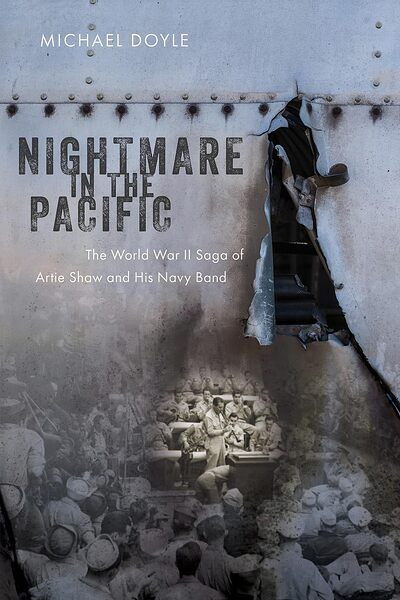Looking for a good read? Here is a recommendation. I have an unusual approach to reviewing books. I review books I feel merit a review. Each review is an opportunity to recommend a book. If I do not think a book is worth reading, I find another book to review. You do not have to agree with everything every author has written (I do not), but the fiction I review is entertaining (and often thought-provoking) and the non-fiction contain ideas worth reading.
Book Review
Artie Shaw in World War II
Reviewed by Mark Lardas
April 6, 2025
“Nightmare in the Pacific: The World War II Saga of Artie Shaw and His Navy Band,” by Michael Doyle, University of North Texas Press, March 2025, 288 pages, $34.95 (Hardcover), $27.96 (E-book)
“Nightmare” was bandleader Artie Shaw’s musical theme with which he opened his shows. It described the experiences of the band he led during World War II on its South Pacific tour.
“Nightmare in the Pacific: The World War II Saga of Artie Shaw and His Navy Band,” by Michael Doyle, tells the story of Navy Band 501 during World War II and is a biography of Artie Shaw, highlighting his war years.
Shaw was a king of the Swing Era, on par with the Dorsey Brothers, Glen Miller, and Benny Goodman. A self-taught musician, he dropped out of high school to play professionally. Although known as a clarinetist when he hit the big times, he started out on the saxophone, practicing until his lips bled.
By 1942 he was at the top, known for his intellectual bite, musical flair, and abrupt departures. He formed and dropped bands suddenly. His personal life was equally erratic. He married and divorced eight times, dropping music in the 1950s to become a writer and competitive marksman.
About to be drafted, he joined the Navy. Initially he was a boot recruit, sent to be a deck hand on a minesweeper. His talent led to reassignment to lead a Navy band in Newport, Rhode Island and promotion to chief. Frustrated by his musicians’ poor quality, Shaw jumped the chain of command to convince James Forrestal, then Undersecretary of the Navy, to let Shaw form a Navy band of picked musicians.
Navy Band 501 resulted. As Doyle shows, Shaw assembled a top-flight collection of talent to produce one of the war’s best bands. Doyle offers brief thumbnails of the musicians and their history.
Band 501 spent eleven months in the Pacific, initially at Pearl Harbor playing at an enlisted man’s club. They shipped out to the South Pacific, visiting New Caledonia, Australia, New Zealand and Guadalcanal. At Guadalcanal they were bombed nightly by the Japanese. Combat and the tour’s stresses broke Shaw. He was medically discharged in 1943.
Doyle follows Band 501 after Shaw’s departure, including a tour in England where it defeated Miller’s band in a battle of the bands and later back to the Pacific at war’s end.
“Nightmare in the Pacific” is first-rate, well-researched, and intriguingly written. Doyle provides sensitive portraits of the musicians involved in Band 501, and an absorbing account of Swing Music in the Big Band Era and World War II.
Mark Lardas, an engineer, freelance writer, historian, and model-maker, lives in League City. His website is marklardas.com.
